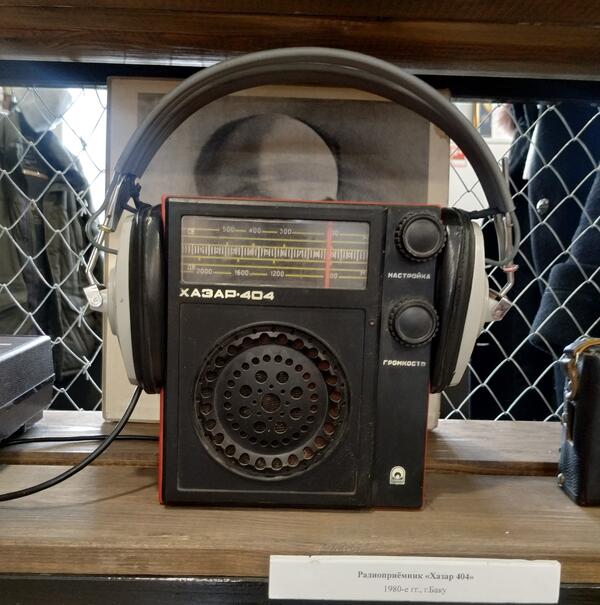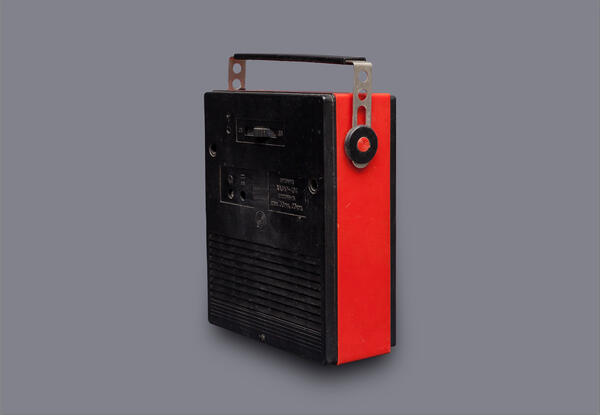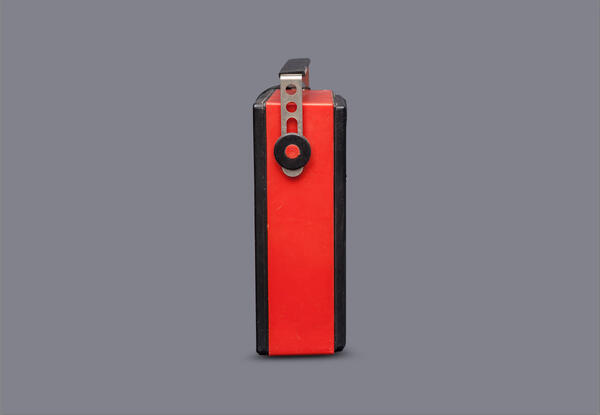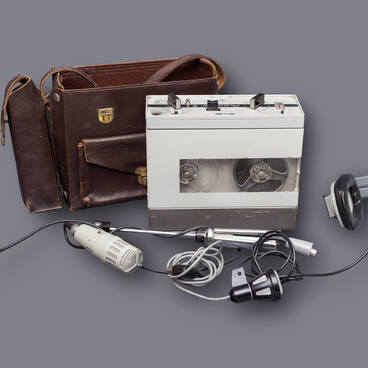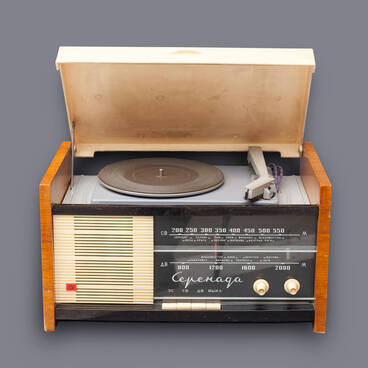In 1984, the Baku Radio Factory (Azerbaijan SSR) began production of a portable transistor radio Khazar-404 with an autonomous power supply. The factory was established during the Great Patriotic War in 1942 and produced military equipment, including radio stations for infantry and artillery divisions.
After the war, the factory facilities proceeded to making household radios and TV sets. In particular, the factory produced the famous KVN-49, Record, and Aelita models. By 1967, more than 130,000 TV sets had been manufactured at the Baku Radio Factory.
The Khazar-404 radio receiver succeeded an entire series of such equipment, which was successfully developed by the factory. In the fall of 1971, the Khazar-401 was released, in 1975, the Khazar-402, and in 1980, the Khazar-403.
The radio from the museum collection was designed to receive broadcasting stations in the long- and medium-wave frequency bands with a built-in magnetic antenna. It was powered by six C type batteries or two 3R12 batteries. A 9-volt power supply could also be used.
The developers made it possible to connect an external antenna, headphones, and an external power supply. The Khazar-404 had a modern feel, was exported abroad, and was popular throughout the Soviet Union. The value-for-money factor of Baku products was also very attractive.
Key characteristics of the Khazar-404 portable radio receiver: sensitivity — 2 mV/m (in the LW frequency band), 1.5 mV/m (in the MW frequency band); nominal output power, min — 300 mW, maximum power — 500 mW; audio frequency range — 250–3,550 Hz; weight (without power supply) — 0.9 kg.
As the 404th model was put into production, the Baku Radio Factory entered a period of dramatic change. In early 1985, it was merged with the Robot factory to form the Baku Production Association “Radiostroyenie”. In addition, there occurred a change of subordination. In the period from 1985 to 1991, the plant ceased to be affiliated with the Ministry of Local Industry and became subordinate to the Ministry of Radio Industry of the USSR.
After the war, the factory facilities proceeded to making household radios and TV sets. In particular, the factory produced the famous KVN-49, Record, and Aelita models. By 1967, more than 130,000 TV sets had been manufactured at the Baku Radio Factory.
The Khazar-404 radio receiver succeeded an entire series of such equipment, which was successfully developed by the factory. In the fall of 1971, the Khazar-401 was released, in 1975, the Khazar-402, and in 1980, the Khazar-403.
The radio from the museum collection was designed to receive broadcasting stations in the long- and medium-wave frequency bands with a built-in magnetic antenna. It was powered by six C type batteries or two 3R12 batteries. A 9-volt power supply could also be used.
The developers made it possible to connect an external antenna, headphones, and an external power supply. The Khazar-404 had a modern feel, was exported abroad, and was popular throughout the Soviet Union. The value-for-money factor of Baku products was also very attractive.
Key characteristics of the Khazar-404 portable radio receiver: sensitivity — 2 mV/m (in the LW frequency band), 1.5 mV/m (in the MW frequency band); nominal output power, min — 300 mW, maximum power — 500 mW; audio frequency range — 250–3,550 Hz; weight (without power supply) — 0.9 kg.
As the 404th model was put into production, the Baku Radio Factory entered a period of dramatic change. In early 1985, it was merged with the Robot factory to form the Baku Production Association “Radiostroyenie”. In addition, there occurred a change of subordination. In the period from 1985 to 1991, the plant ceased to be affiliated with the Ministry of Local Industry and became subordinate to the Ministry of Radio Industry of the USSR.

